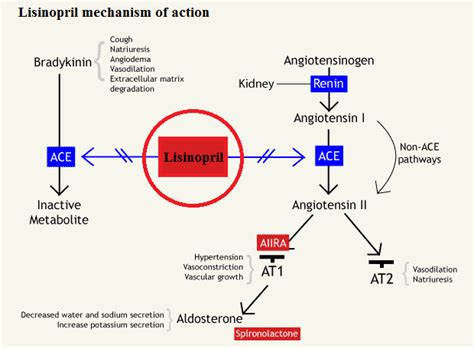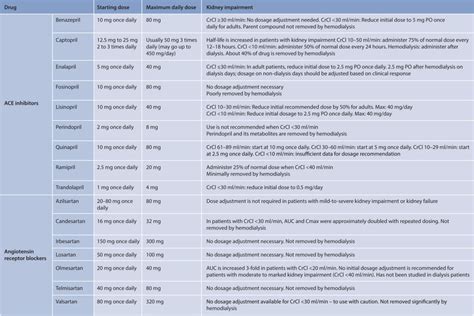Intro
Discover key facts about Lisinopril, a common ACE inhibitor for blood pressure and heart failure, including its benefits, side effects, and interactions, to better manage hypertension and cardiovascular health effectively.
Lisinopril is a medication that has been widely used for decades to treat various cardiovascular conditions, including high blood pressure and heart failure. Its effectiveness and relatively mild side effect profile have made it a staple in the treatment of these conditions. However, like any medication, lisinopril has its own set of characteristics, benefits, and potential drawbacks that patients should be aware of. Understanding these aspects can help individuals make informed decisions about their health and treatment plans.
The importance of lisinopril lies in its ability to manage and prevent the progression of cardiovascular diseases, which are among the leading causes of morbidity and mortality worldwide. By controlling blood pressure and reducing the strain on the heart, lisinopril can significantly improve the quality of life for individuals with these conditions. Moreover, its role in protecting against kidney damage in patients with diabetes makes it a valuable medication for those at risk of developing diabetic nephropathy.
Lisinopril belongs to a class of drugs known as angiotensin-converting enzyme (ACE) inhibitors. These drugs work by blocking the action of angiotensin II, a potent vasoconstrictor that is part of the renin-angiotensin-aldosterone system (RAAS). By inhibiting the conversion of angiotensin I to angiotensin II, lisinopril causes blood vessels to relax and widen, which lowers blood pressure and increases the supply of blood and oxygen to the heart. This mechanism of action not only helps in managing hypertension but also in reducing the risk of heart failure and other cardiovascular events.
How Lisinopril Works

Benefits of Lisinopril
The benefits of lisinopril are multifaceted, ranging from its efficacy in lowering blood pressure to its protective effects on the kidneys and heart. Some of the key benefits include: - Reduced risk of heart failure and stroke - Protection against kidney damage in diabetic patients - Improvement in survival rates for patients with heart failure - Ability to slow the progression of cardiovascular diseaseSide Effects and Precautions

Interactions and Contraindications
Lisinopril can interact with other medications, including diuretics, potassium supplements, and nonsteroidal anti-inflammatory drugs (NSAIDs), which can affect its efficacy or increase the risk of side effects. Certain conditions, such as pregnancy, kidney disease, and heart failure, require careful consideration and monitoring when prescribing lisinopril. Patients should inform their healthcare provider about all medications they are taking, including over-the-counter drugs and herbal supplements, to minimize the risk of interactions.Dosage and Administration

Monitoring and Follow-Up
Regular monitoring of blood pressure, kidney function, and potassium levels is essential for patients taking lisinopril. This allows healthcare providers to adjust the dosage as needed, manage potential side effects, and ensure the medication is working effectively. Patients should also be aware of the signs of serious side effects, such as angioedema or severe allergic reactions, and seek immediate medical attention if they occur.Long-Term Use and Effects

Alternatives and Comparisons
For patients who cannot tolerate lisinopril or have contraindications to its use, alternative medications within the ACE inhibitor class or other antihypertensive drug classes may be considered. Comparisons between different ACE inhibitors, such as enalapril, captopril, and ramipril, show varying profiles of efficacy, side effects, and cost, which can influence the choice of medication. The decision to use lisinopril or an alternative should be based on individual patient factors, including the specific condition being treated, comorbidities, and potential drug interactions.Conclusion and Future Directions

Final Thoughts
Understanding the role of lisinopril in managing cardiovascular health is crucial for patients and healthcare providers alike. By recognizing the benefits, potential side effects, and interactions of this medication, individuals can make informed decisions about their treatment plans. The ongoing research and advancements in the field of cardiovascular medicine hold promise for improved treatments and outcomes, underscoring the importance of staying informed and engaged in one's health care.What is the primary use of lisinopril?
+Lisinopril is primarily used to treat high blood pressure (hypertension) and heart failure. It is also used to protect the kidneys from damage due to diabetes.
How does lisinopril work?
+Lisinopril works by blocking the action of angiotensin II, a natural chemical that narrows blood vessels, allowing blood vessels to widen, which lowers blood pressure and increases the supply of blood and oxygen to the heart.
What are the common side effects of lisinopril?
+Common side effects of lisinopril include cough, dizziness, headache, and increased potassium levels. Less common but serious side effects can include kidney problems, allergic reactions, and angioedema.
We invite you to share your thoughts and experiences with lisinopril in the comments below. If you found this article informative, please consider sharing it with others who might benefit from this information. Your engagement and feedback are invaluable in helping us create content that addresses the needs and concerns of our readers.
